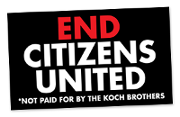Biblio
Filters: First Letter Of Last Name is L [Clear All Filters]
(1973). Aging & mental health : positive psychosocial and biomedical approaches.
"New models of vocational rehabilitation, supported employment, and skill development will need to be developed to respond to the desires of older adults to engage in meaningful activities in late life." (p. 177)
(1966). Automation, education, and human values.
"A fourth reason [we regard widespread automation with suspicion] lies in our inability to think of a responsible role in society which is not evaluated as a job, paid for with money, which individuals seek freely, from which they can be fired, and at which they must work or else, if not starve, they will live in humiliation and deprivation. We can look forward to a day in which the privilege of working will be open to all but under no threat of starvation." (p. 69)
(1994). C++ Components and Algorithms.
(1995). C++ Templates and Tools.
(2000). The Cluetrain Manifesto : The End of Business As Usual.
"Conversations are where intellectual capital gets generated. But business environments based on command-and-control are usually characterized by intimidation, coercion, and threats of reprisal. In contrast, genuine conversation flourishes only in an atmosphere of free and open exchange." (p. 15)
(1978). Control your depression.
"Psychological prevention is a much neglected area. There is so much need for giving services to people who are hurting that we do not take the time to prepare those who are not hurting to live life in effective ways. If we did, we might be able to prevent many from becoming casualties. The savings in therapy time and money—not to mention human suffering—could be enormous. Perhaps some day 'psychological impact statements' will be as familiar to our ears as 'environmental impact statements.'"
(2002). Creativity.
Express Exec.
"Many of the most important tasks related to shaping and fostering ideas are not a 'mandated' part of a manager's role. The experimentation and play that is so important to creativity will not occur unless managers match what they say with what they and the organization do to reward and recognize risk taking, whether or not it is successful." (p. 85)
(2005). Crunch Time: 8 Steps to Making the Right Life Decisions at the Right Times.
"Through experience and observation, I've learned and counselled that people who are hostile and belligerent often have developed their 'offensive' posture as a form of defense. These individuals lash out to keep people from further hurting them, possibly discovering and uncovering their vulnerability, and/or from seeing how hurt and rejected they truly feel. Time and again, their defensive behavior is used as a buffer to protect the raw feelings hidden within. In essence, these individuals appear to believe that: 'If I attack you first, I might scare you off, and you won't get to me. Thus, I'm safe for the moment from hurt, disappointment, rejection, etc. Safe from people seeing the truth.'
Another defensive strategy that I deal with on a regular basis is that of withdrawal or apathy. In these cases, individuals appear to withdraw from life and/or appear not to care, in order to conceal their low self-esteem and their intense fear of feeling more rejection and pain. These individuals, in some respects, take the opposite approach in order to protect themselves. They get out of the game altogether. If they don't get up to bat in the game of life, they can't strike out. If they don't put themselves into the contest, they can't be judged—and be rejected. These individuals appear as if—or say—they don't care. But deep down, they care, and once cared—big time. But as a result of past experiences of perceived or real rejection, they've chosen to never let themselves, or their expectations be rejected or dashed again. By withdrawing from it all, they're better safe than sorry." (p. 197)
Another defensive strategy that I deal with on a regular basis is that of withdrawal or apathy. In these cases, individuals appear to withdraw from life and/or appear not to care, in order to conceal their low self-esteem and their intense fear of feeling more rejection and pain. These individuals, in some respects, take the opposite approach in order to protect themselves. They get out of the game altogether. If they don't get up to bat in the game of life, they can't strike out. If they don't put themselves into the contest, they can't be judged—and be rejected. These individuals appear as if—or say—they don't care. But deep down, they care, and once cared—big time. But as a result of past experiences of perceived or real rejection, they've chosen to never let themselves, or their expectations be rejected or dashed again. By withdrawing from it all, they're better safe than sorry." (p. 197)
(2002). Defying the Crowd: cultivating creativity in a culture of conformity.
"Creative people are those who consciously and purposefully decide to follow their own path. They do it because they want to, not because someone makes them." (p. 237)
(1998). Designing XML Internet Applications.
(1991). Developing and Training Human Resources in Organizations (2nd Edition).
"Despite its wide use, punishment can have unfortunate side effects. First, there is a high probability that the response will be reduced only when the punishment agent is present....Second, punishment may result in avoidance, hostility, or even counteragression toward the punishing agent." (p. 235)
(1998). Die Broke.
And if you want self-actualization, look for it in all that you do outside of your work. Be the best spouse, parent, child, neighbor, friend and citizen you can be, and you'll be far closer to reaching your true human potential than if you concentrated on being the best accountant you can be." (p. 29)
(2000). Digital Capital : Harnessing the Power of Business Webs.
"Corruption thrives in a culture of secrecy." (p. 182)
(1996). Distributed Algorithms.
(1965). The Divided Self.
"The component we wish to separate off for the moment is the initial compliance with the other person's intentions or expectations for one's self, or what are felt to be the other person's intentions or expectations. This usually amounts to an excess of being 'good', never doing anything other than what one is told, never being 'a trouble', never asserting or even betraying any counter-will of one's own. Being good is not, however, done out of any positive desire on the individual's part to do the things that are said by others to be good, but is a negative conformity to a standard that is the other's standard and not one's own, and is prompted by the dread of what might happen if one were to be oneself in actuality. [emphasis mine] This compliance is partly, therefore, a betrayal of one's own true possibilities, but is also a technique of concealing and preserving one's own true possibilities, which, however, risk never becoming translated into actualities if they are entirely concentrated in an inner self for whom all things are possible in imagination but nothing is possible in fact."
(1999). Essential Java Style.
(2001). Ethics for the New Millennium.
260. Abstract
"And whereas a vision properly motivated—which recognizes others' desire for and equal right to happiness and to be free of suffering—can lead to wonders, when divorced from basic human feeling the potential for destruction cannot be overestimated." (p. 72)
(1975). Executive Stress.
"The cost of self-doubt in dollars and frustration is beyond computation. Despite their capacity for zest and spirit, uncounted numbers of people endure what they experience as dead-end traps with quiet desperation. They want to do something bigger and more exciting than what they are doing, but they are either afraid or don't know where to begin. They are trapped by barriers they cannot see and hindered by psychological glasses that distort their perception of themselves. The tragedy of having given up on themselves is that so many could use what seem to be barriers as stepping stones to gratification. Too much self-doubt blinds us to the opportunities around us. Without knowing where to start pulling oneself out of the psychological trap, even the person with considerable self-confidence has difficulty doing so." (p. 74)
(C)2014 CC-BY-NC 3.0, workcreatively.org











 ]
]